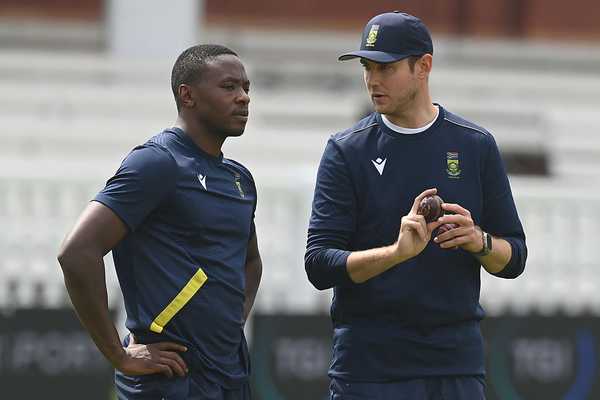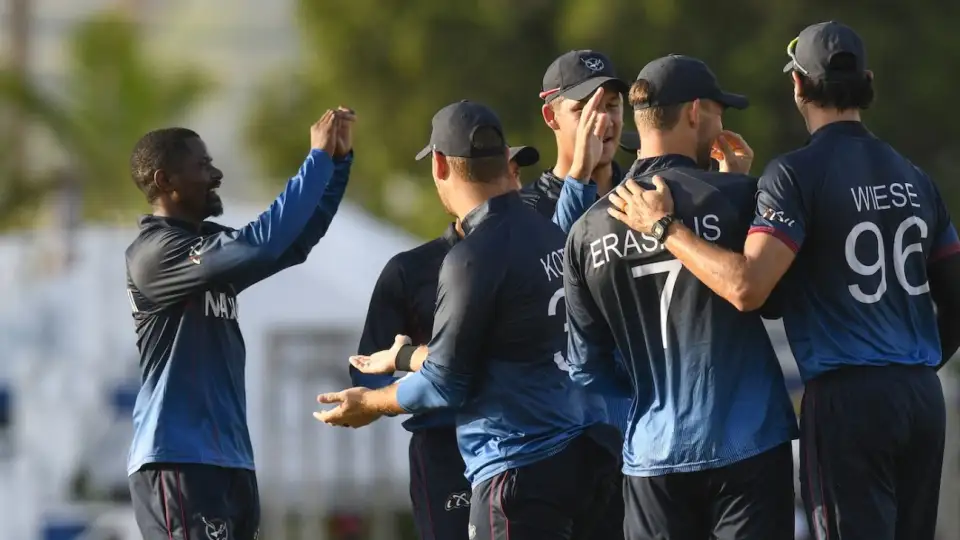The build-up to the World Test Championship (WTC) final between South Africa and Australia at Lord’s this week has been dominated by talk of the bowlers: Rabada versus Hazlewood, Jansen versus Starc, Maharaj versus Lyon. With five of the top 10 bowlers in the world in the squads, it’s no surprise that most of the pre-final buzz has centered around the bowlers. However, four of the top 10 batters are also part of the squads, but you’d hardly know it given the overwhelming focus on the bowlers.
Smith’s Optimism Amid the Bowling Buzz
What did Steve Smith make of this? The Australian batter remained positive about his side’s batting prospects.
“We’ve been training really well over the last week or so, and all the batters feel like they’re in a good place,” Smith said on Monday. “Now we’re excited to go out and play. It’s another WTC final. We have some fond memories from last year, just down the road. Coming to Lord’s, it’s a place we traditionally play pretty good cricket.”
Indeed, Australia dominated the last WTC final at the Oval in June 2023, defeating India by 209 runs. Smith scored 121 in the first innings, and his partnership of 285 with Travis Head (163) set Australia on course for victory. Lord’s has been a good hunting ground for Smith too, having played three matches there, with one win, one draw, and one loss.
But perhaps Smith was a little evasive when asked about the shift in attention from bat to ball. Instead of addressing the growing emphasis on bowlers, Smith discussed the station, the platform, and the destination—leaving the actual question about batters being relegated to the background unanswered.
Shukri Conrad on the Shift to Bowlers’ Focus
So, what did Shukri Conrad, South Africa’s coach, think of the shift in emphasis? “It’s pretty normal to chat about the bowlers when you’ve got guys like Kagiso Rabada, ranked two in the world, and Marco Jansen and Keshav Maharaj,” Conrad said. “But on the batting front, there’s a quiet confidence. We might not have superstar names, but as a collective, we’re pretty confident.”
While the spotlight has been squarely on the bowlers, it’s important to remember that both teams are ultimately at the mercy of the ball. South Africa and Australia are accustomed to playing with the Kookaburra ball, but for the WTC final, the Dukes ball will be used.
The Dukes Ball: A Challenge for Batters?
The difference between the two balls lies in their design. The Kookaburra has a flatter seam and a lacquer that doesn’t last as long. This typically results in less movement off the pitch and through the air, which is more favorable for batters. On the other hand, the Dukes ball is known for more pronounced swing and seam movement, making it trickier for batters, especially in England.
Smith addressed this issue, noting, “I think they’ve changed the Kookaburra. The seams on the ones we play with back home are a lot bigger, and when combined with the greener grass on the pitches the last few years, it’s a perfect storm for bowlers.”
However, Smith isn’t overly concerned about the Dukes ball. “It’s about playing what’s in front of you. The Dukes ball can swing for longer. As a batter, it’s about using that swing and going with it. Particularly at Lord’s, you want to use the slope and the swing together. I enjoy playing against the Dukes.”
With 22 of his 116 Test matches played in England, Smith is well-versed in dealing with the Dukes ball. Meanwhile, the South Africans have gained 28 caps in England, with nine of those matches being at Lord’s.
South Africans’ Preparation with the Dukes Ball
“It takes a little bit of adjusting,” Conrad said. “We got some practice in the warm-up match in Arundel and in the nets. Whatever adjustments needed to be made have been made.”
Although the South African batters faced only 79 overs in their rain-ruined match against Zimbabwe, they didn’t get a real feel for facing the level of bowling that Australia will bring. However, the coaches had a great opportunity to gain insights from Stuart Broad, one of the most successful bowlers with the Dukes ball in English conditions.
“The ribeye was good,” Conrad joked about their dinner with Broad. “It was enlightening. If I hadn’t called time at 10:30 pm, he’d probably still be chatting with us.”
Broad also joined the South Africans for training on Monday, sharing his expertise with the Dukes ball. With 398 of his 604 wickets coming with the Dukes and 113 wickets at Lord’s, Broad knows how to use this ball to his advantage. The question remains: can he teach his temporary teammates the secret to success in such a short time?








